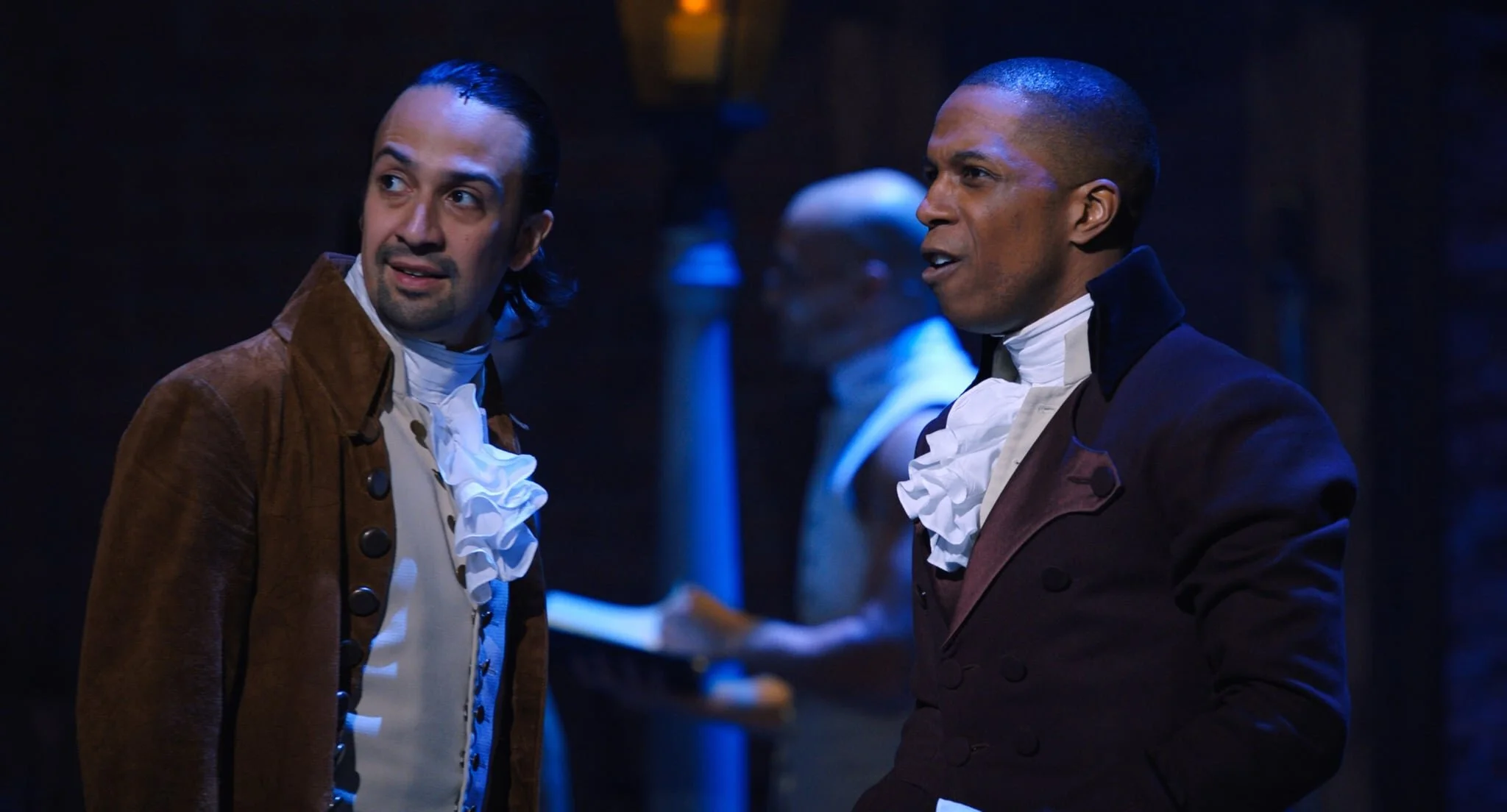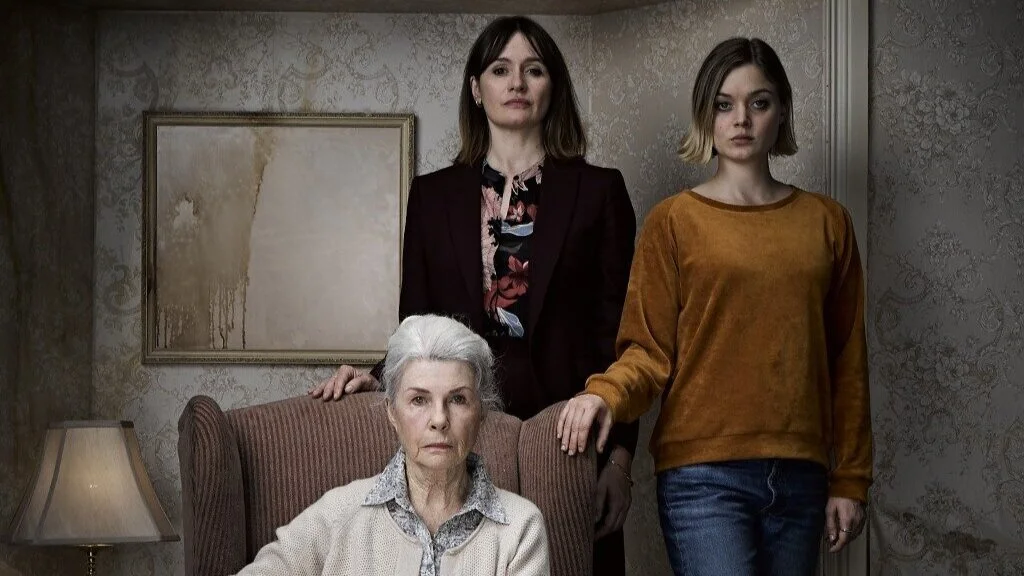Review: Hamilton
When I saw Hamilton onstage, it was a kind of spur-of-the-moment decision. I had very limited funds, as I was freshly graduated from college and jobless. Yet, on a trip to visit a very good friend, I decided to spend a valuable day trying to get into a matinee. I waited outside the theater on a brisk, overcast Chicago day in a huge winter coat, my dad’s flannel-lined jeans, and clunky snow boots. I entered the #Ham4Ham lottery, then ultimately paid face value for a lottery ticket someone didn’t claim.
And even under those circumstances where I was cramped, craning, and overheating in a wildly inappropriate outfit for the theatre, it was as magical as ever. I cried plenty of times, most of the time just at the awe that I was really there, in the room where it happens.
Now, in a wild turn of events, that room is...every room. Like many pre-established systems that we’ve never bothered to question before, the age of coronavirus is breaking down the classist ideas of how theatre is accessed. World-class theatre has been previously only available to high-income people in a handful of cities all over the world, and those people would insist to you that this is the way it has to be. According to many, live theatre must be seen in person, and if you aren’t located conveniently enough for that or can’t afford the ticket, tough shit.
My obstructed-view matinee seat, from which I couldn’t see the second floor of the stage at all without putting my head down by my knees, cost $120, an amount that was truly irresponsible for a jobless college graduate to spend.
A month of Disney + is $6.99. Just seven bucks to watch the original Broadway cast of Hamilton absolutely crush it for 160 minutes.
And is it the same? No, of course not. Live theatre has a certain spontaneity that you don’t get here, but for a show as planned down to the smallest detail as Hamilton, it’s a small sacrifice. Electricity runs through the very fabric of this play; you’re not missing out on much just because that last little spark isn’t there.
Especially because this filmed version does a really remarkable job of capturing all aspects of the show without making you feel like you’ve sacrificed part of it. The big picture elements of choreography, lighting, and staging are just as highlighted as the minutiae of everyone’s performances. (It should also be mentioned that even if you could afford to go to Hamilton on Broadway during the original cast run, sitting close enough to get this kind of view is a near impossibility, unless you were/are a very...shall we say...edible level of rich.)
From the second it starts, it’s clear that having the original stage director, Thomas Kail, spearhead the filmed version was a profoundly wise decision. This truly feels as if it’s made by someone with the intimate knowledge that’s required to know exactly when to stop focusing on the innate charms of Lin-Manuel Miranda or Leslie Odom Jr. and, instead, cut to an ensemble member who’s got a great moment coming up or to cut wide to show us the overall picture of a huge number like “Yorktown”. The way these smaller organic moments combine with the carefully choreographed ones give this version that live theatre feeling that’s supposedly so irreplaceable. It’s lightning-in-a-bottle that occasionally makes one think of Jonathan Demme’s Stop Making Sense.
Now, all that being said, I couldn’t help but sit there and listen to some of the messaging and theming of Hamilton and wonder...why make this play accessible first? Why now? This is a very idealized, kind of watered down version of the American Revolution. Hamilton focuses more on the hope and ideals of the American experiment than the violence and bloodshed and chaos of this time, and that feels wildly inappropriate now. What was once so inspirational to many, myself included, now feels almost propagandic, designed to placate the masses in a time of turmoil where we are realizing that the systems built to protect us are hurting and exploiting the very people of color that, ironically, make up the casts of Hamilton. It feels designed to shift the conversation, starting from the July 4th weekend it was released, away from how we can improve this country and fix our political system back to the same self-congratulatory conversations to which Americans are already so prone.
After all, Miranda started writing Hamilton in 2009, and it premiered in 2015, both dates well within the era of Obama. The centrist liberal idealism that’s so synonymous with this era is truly glaring when this now releases into 2020 America, where more Americans have died in the last five months from coronavirus than died in the entirety of World War I. Watching the creation of this country be so highly praised for a couple hours is really hard to palate in an era where we’re being rapidly shown how easily the flawed system can be exploited into facism that threatens our democracy and our basic human rights. In this new context, Hamilton exposes just how deeply privileged its outlook has always been. Every time Eliza croons, “look around, look around at how lucky we are to be alive right now,” it feels a little like a slap to the face.
But all that being said, making theatre accessible to the masses is a huge first step to starting these kinds of important conversations and debates. It’s so important that now, anywhere you can stream Disney + has become a theatre where you can watch the hottest ticket on Broadway. One of the very, very few advantages of the coronavirus pandemic is how accessible theater has become. Personally, I’ve gotten to see Danny Boyle’s West End production of Frankenstein through the National Theatre YouTube account, and I watched Oscar Isaac swear as he tried to get his technology to work before portraying one of humanity’s oldest characters, Oedipus, via Zoom. Plays that may have once been only performed in New York City or London or on a small tour are now available and accessible to people all over the United States and the world.
So, as I found myself sitting down on my futon to see Hamilton again, this time in my pajamas with a bowl of cereal, I marveled at the fact that good, fascinating art can always survive a change in format. The key is when that conversion is done right by great, intelligent artists who know what they’re doing. The original creative team behind Hamilton is just that, and this digital version is a step in a wonderful new direction for theatre accessibility, even if the themes of this particular musical already feel a little dated after only five years.














